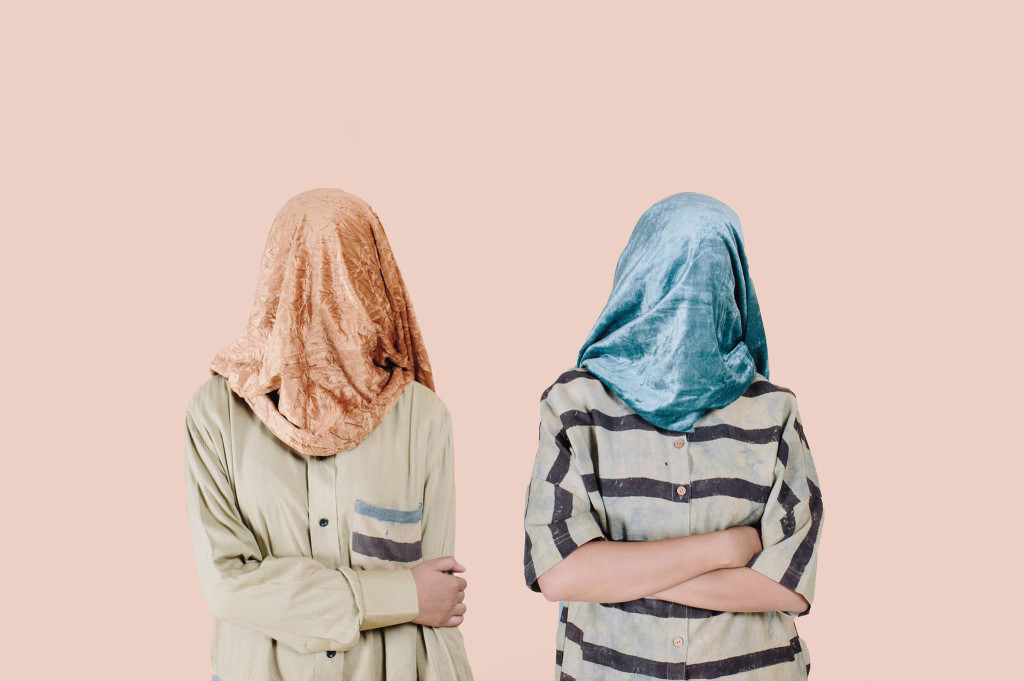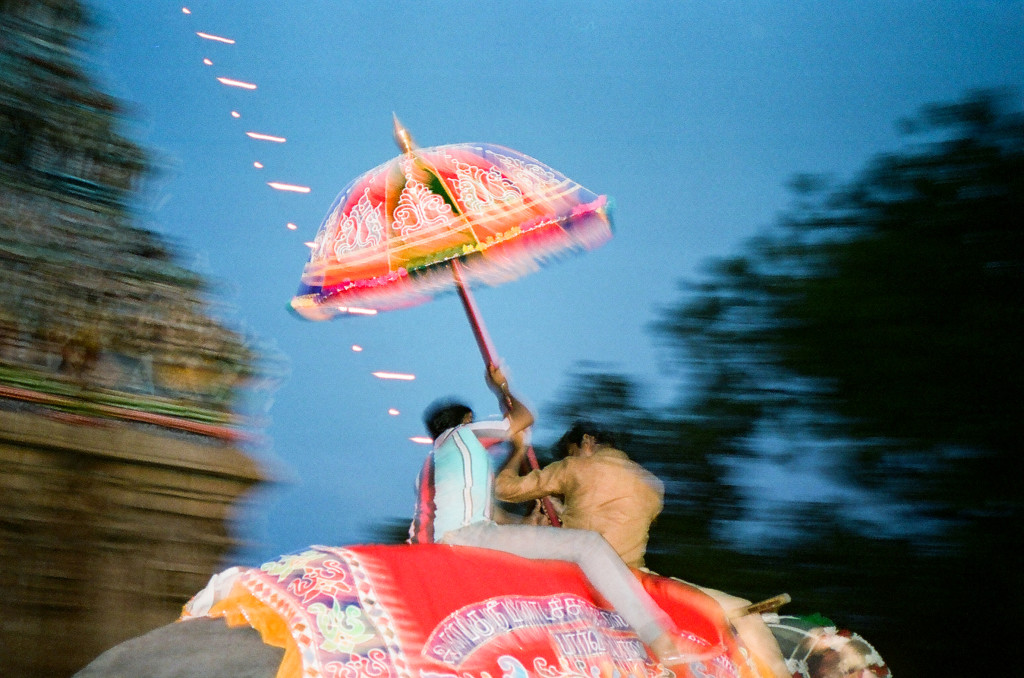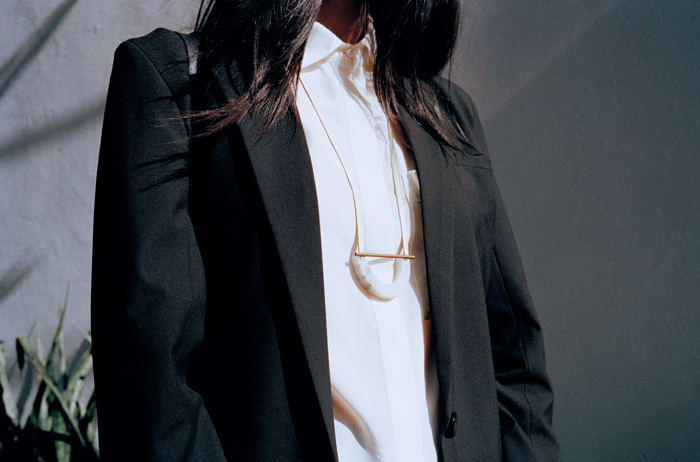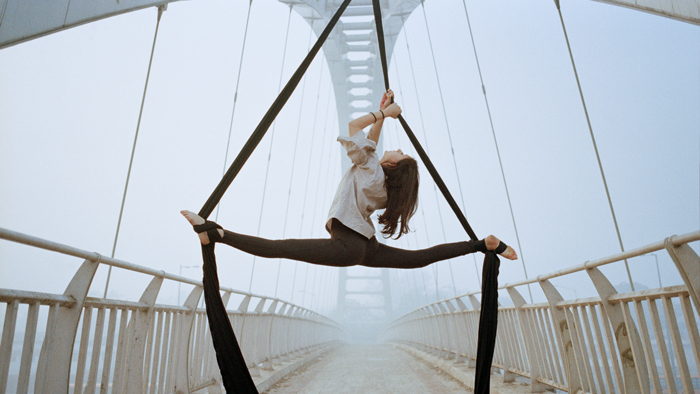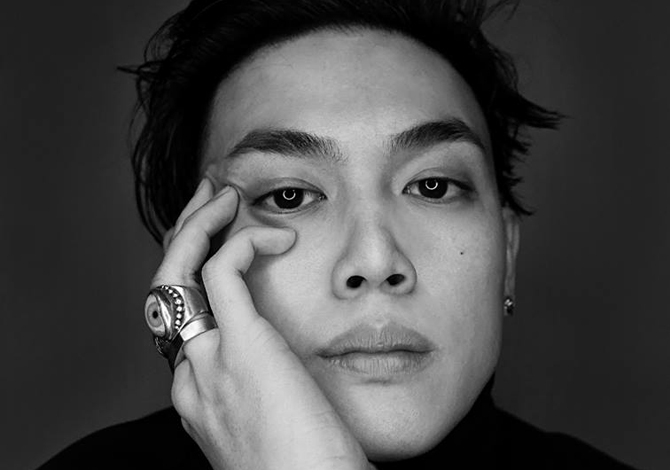Dear is a young film production company based in New Delhi founded in 2014 by Kassia Karr and Grant Davis. One of a few such agencies in India, their body of work involves a mix of commercial work and passion projects spanning culture, fashion and lifestyle. It is the narrative of their personal work that truly stands apart: at once curious about India and approaching storytelling from a refreshing lens. We are looking forward to their future – especially more opportunities to push the boundaries of fashion films.
The beginning > When we founded Dear we had to start from scratch, initiating our own projects and slowly building a body of work. From there we have been lucky to attract a growing list of clients.
Before India, Grant grew up in the suburbs of Philadelphia and I (Kassia) grew up between Milwaukee and its suburbs. Our personal interest in India each started when we were younger – Grant became a fervent Bollywood fan as a teenager, and I grew up having close Indian-American friends and was exposed to Indian food, films, etc. Our interests developed into academic pursuits, which led us both to come to India to study, separately, nine years ago. Grant did his BA in Hindi-Urdu studies with the Hindi Urdu Flagship Program at the University of Texas-Austin, and spent a lot of time in India studying Urdu in Hyderabad and Lucknow. I have a Bachelor and Master’s degrees from the University Professors Program at Boston University focused in South Asian studies. I did an exchange program in Madurai, Tamil Nadu for a year during undergrad, then travelled around India for my thesis research in 2009.
Above: image | ASA lookbook feature
After Grant graduated, he moved to New York City where he started working in advertising. In 2011, he connected with a team of filmmakers making a feature length documentary on the residents of Kathputli Colony in New Delhi, and he started to work as their translator and field producer. The documentary, Tomorrow We Disappear, premiered at Tribeca Film Festival last spring.
Upon completing my Master’s, I moved to Delhi to work full time in 2010, as I felt more drawn to learning about India by living here, rather than studying and writing about it from continents away. I first worked at the design research studio Quicksand and then as a strategic planner at Wieden+Kennedy Delhi before transitioning to work as the brand and culture manager at bhane. in 2012.
We connected after Grant had done a video piece for MTV that I had seen online, in which he goes around Delhi in search of funky embroidered denim jeans and the people who make them. What really caught my attention, however, was the perfect, unaccented Hindi he was speaking. Impressed, I sent him a message and we started chatting. Later that year, without having yet met, we started formulating the idea of setting up a multidisciplinary studio that brought together our collective interests – filmmaking, visual ethnography, travel, etc. Grant came back to India for a project in September of that year, and by December we had the company set up.
Above: image | Madurai, Tamil Nadu
On the job > From our own personal trajectories, we definitely believe in the value of experiential, on-the-job learning. Art school is great, graduate school is great, but if people want to pursue something in a creative field it’s better to just get in there and start doing the work. For Grant, working on Tomorrow We Disappear gave him a crash course in documentary making, particularly as it was a small crew where everyone took up multiple responsibilities. From that foundation, he started making his own films and that has grown into what we are doing together today.
In my case, I initially went to college to study photojournalism, but gave that up for more traditional academic pursuits. Ultimately my professional trajectory has come back around, and has further expanded beyond photography into filmmaking. By taking the leap and setting up our studio we’ve been able to both pursue the things we really enjoy, while learning a lot along the way. And India has been an interesting backdrop for all of this – the industry here is less saturated, one, but I also think clients are still discovering the medium – so it’s a unique blend of opportunities and challenges.
Especially in the world of filmmaking, there is a wealth of resources and tutorials available online, and there’s a lot you can learn without a formalized course. You don’t need a degree to validate your talent! It’s more about being disciplined towards and focused on what you do.
We are still finding our sweet spot in terms of the commercial projects we do and the passion projects we strive to undertake. What has been important for us is to maintain our own personal work alongside any branded work we are doing – it helps our sanity and work-life balance to always have something that we have full ownership of and creative control over. It also provides us a space to be experimental and keep pushing our work in new directions. For now, we’ve been making shorter documentaries out of our own interest, but we’d ultimately love to work with platforms like Netflix, Field of Vision, or Nowness, all of which are doing a lot to grow the global documentary community and its audience.
Above: image | Anomaly editorial
Contemporary fashion is less clothes making, more image-making > Having worked on a number of fashion-related projects, we’d definitely agree that with fashion, the intrinsic quality of materials, the level of tailoring, and the craftsmanship are all extremely important. But the industry is so vast and open now that it’s increasingly important for brands to have differentiators that go beyond just the physical elements. Fashion designers and brands communicate their vision via the medium of clothing, but that medium also needs to live in a bigger visual universe. Imagery builds the narrative and gives it more weight and substance. When done properly, it’s ultimately what separates the good from the memorable.
Mansur Gavriel does this well with their tightly edited photography and social media presence. For longer form content, Apiece Apart and Elizabeth Suzann have nicely curated journals which capture the aesthetics of the community around their brands. And on the video front, this film on Proenza Schouler is one example we like a lot, in which the brand is profiled but in a very non-conventional, experimental way which feels true to their identity and style.
Above: video | ‘Who Is Mickey?’ short documentary
Exciting projects > We’ve been doing a set of short, character-driven documentary pieces, just on our own time and resources. We have a long list of interesting people we’ve met over the last nine years, while studying or traveling – and it has been enjoyable to have the culmination of ideas and plans finally come together in these films.
By developing our style and approach over the last two years through shorter format films, we’ve recently taken the leap and started our first feature-length documentary project in Tamil Nadu. It’ll take at least a year of travel and filming to produce, but we’re excited to be digging into something more substantial.
Ultimately these types of films are where our hearts lie, and through these projects we want to create work that authentically reflects some of the things we love most about this country – particularly the weird and wonderful stories you can find when you scratch just beneath the surface.
Client base > Everything has been via word of mouth and personal connections. We maintain a social media presence on Instagram, and that’s enough for us. We want to let our work speak for itself and to build our clients based on merit. We’ve been fortunate to work with some great brands and individuals as a result.
Above: image | screen grab of video for Nicobar
The cost of fashion films > We think clients increasingly value film as a medium, but not everyone, however well-intentioned they may be, understands how many elements are involved in a film production. There’s the crew, the time spent shooting, the location, the equipment, the music, the editing and post-production – even a one minute film can be quite time and labor-intensive. The costs of a higher production fashion film, for example, can therefore quickly start adding up. It’s an issue we occasionally face, though we do want to work with a wide range of clients. But sometimes the budgets being sought just aren’t viable for us, due to all the baseline elements and associated expenses involved.
That’s not to say you can’t do good things on a small budget with a minimal amount of equipment, but then it’s ultimately about the quality of the concept and the overall execution of the film. People are making films on iPhones now – so the medium is more accessible than ever, but it’s really all about what you do with what you have.
Above: video | Behind the scenes at Bodice
Digital & other references > BOOOOOOOM NOWNESS reddit 032c PITCHZINE The California Sunday Magazine iGNANT Lucky Peach Motherland Magazine The Intercept / Field Of Vision
David Byrne is my favourite artist, as he does pretty much everything: making music, making films, writing books, etc. It’s good to have outputs in different spaces, it keeps you sharp. India is a great place for fulfilling those outlets, whether it’s getting furniture made, designing a shirt to have stitched, or shooting a film.
Some favorite films are Stranger Than Paradise; Paris, Texas; and A Scene at the Sea. Music that never gets old – Talking Heads, Roy Orbison, ESG, Celine Dion (all the hits), Mehdi Hassan ghazals, and 80’s hair metal. – Grant
Right now work and life are pretty much one and the same, but we’re happy with that. We love what we do and we’re thankful we are in a position to be doing it every day. Most of any time we get away from work is either to spend with family back home, or to travel and work on our own projects. Next up we’ll be heading back to Tamil Nadu to continue working on our full length feature there, and we have a number of shorter documentary and experimental pieces which are in various stages of production at the moment.
I think the story of the photographer Vivian Maier is fascinating as a testament to focusing on what’s most important – the act of creating – not the potential for recognition via your work. With the way social media is these days, it’s really easy for people to burn bright and quickly. It’s difficult, but I try to keep my focus on the process and not what I can get out of it.
I’ve really been enjoying the film styles of The Daniels and Dimitri Basil. Photography right now – Ramon Haindl, Blaise Cepis, Vivian Sassen and Ashley Sophia Clark. And lately I’ve been reading the Neapolitan Novels by Elena Ferrante, which are amazing. For fashion, my current favourites (hard to shortlist!) are Building Block, Elizabeth Suzann, Bodice, Maryam Nassir Zadeh, Desiree Klein, ASA, Alpha 60, Black Crane, and COS. – Kassia
Above: image | Olio editorial
Work history >
Grant: Dear: Co-Founder, New Delhi. 2014 – present
McCann, New York. 2013 – 2014
Tomorrow We Disappear: Translator/Field Producer. 2011 – 2013
Ogilvy, New York. 2011
Kassia: Dear: Co-Founder, New Delhi. 2014 – present
bhane.: Brand & Culture Manager, New Delhi. 2012 – 2014
Wieden + Kennedy: New Delhi. 2012 – 2014
Quicksand, New Delhi. 2010 – 2011

